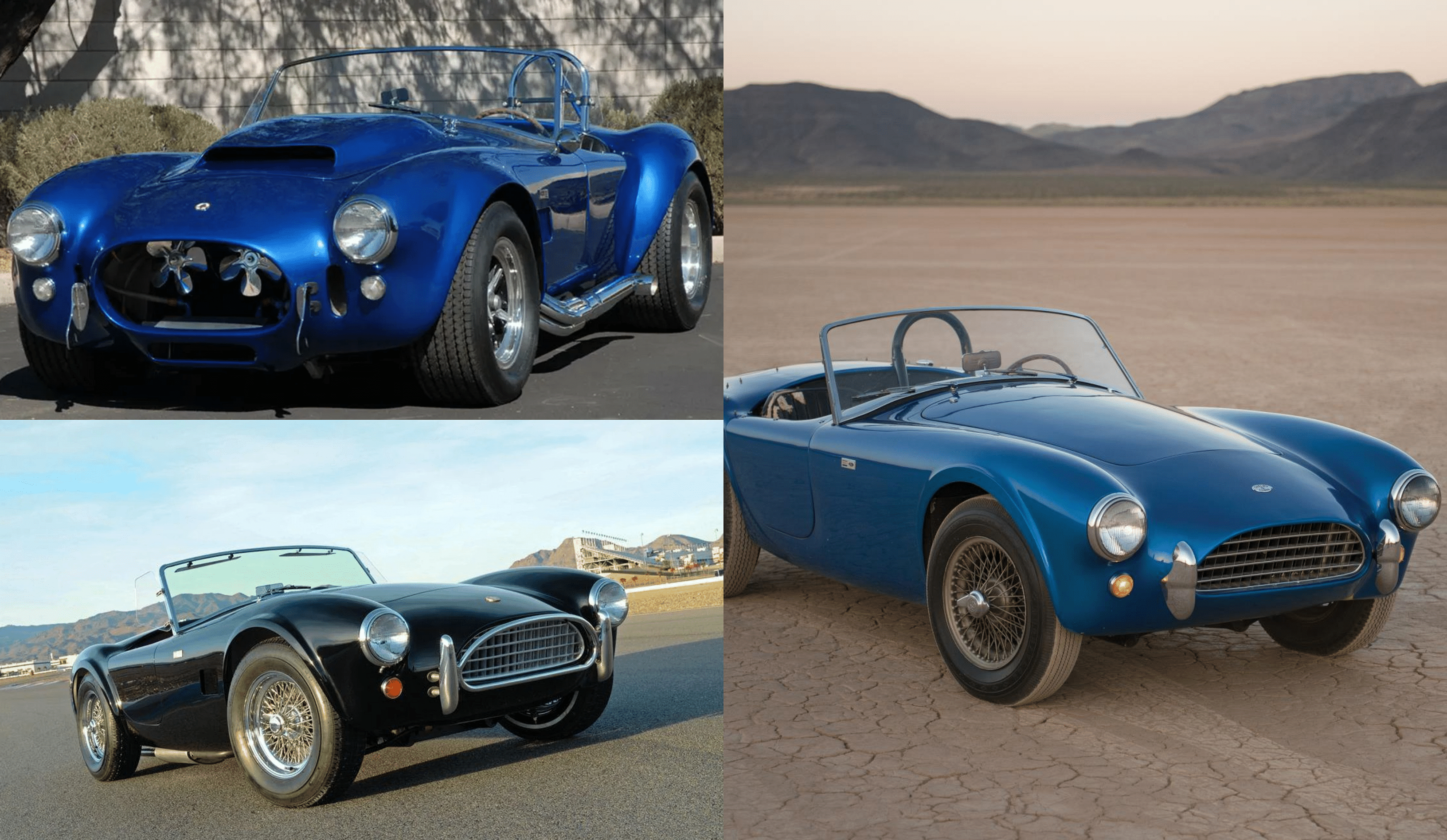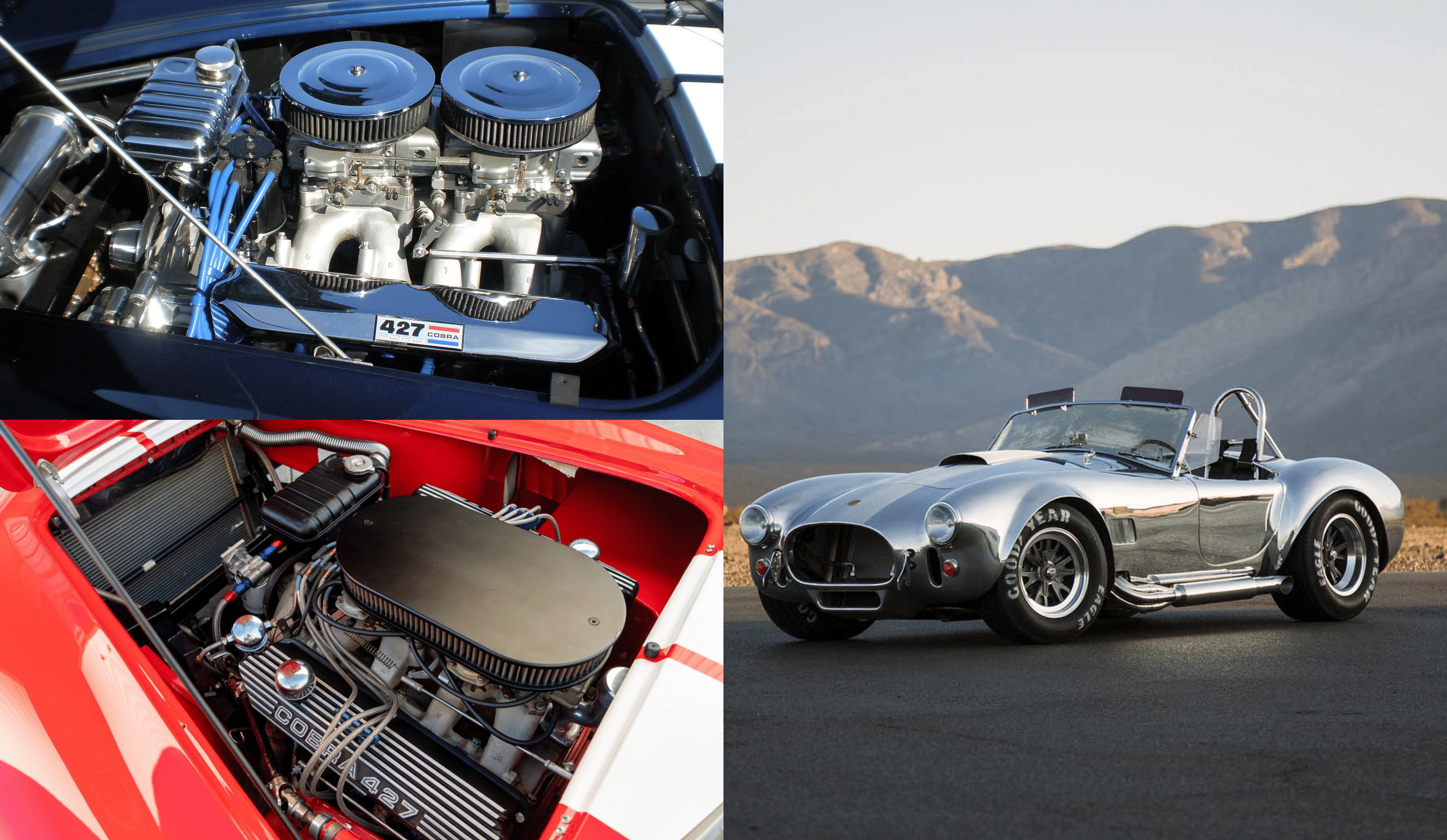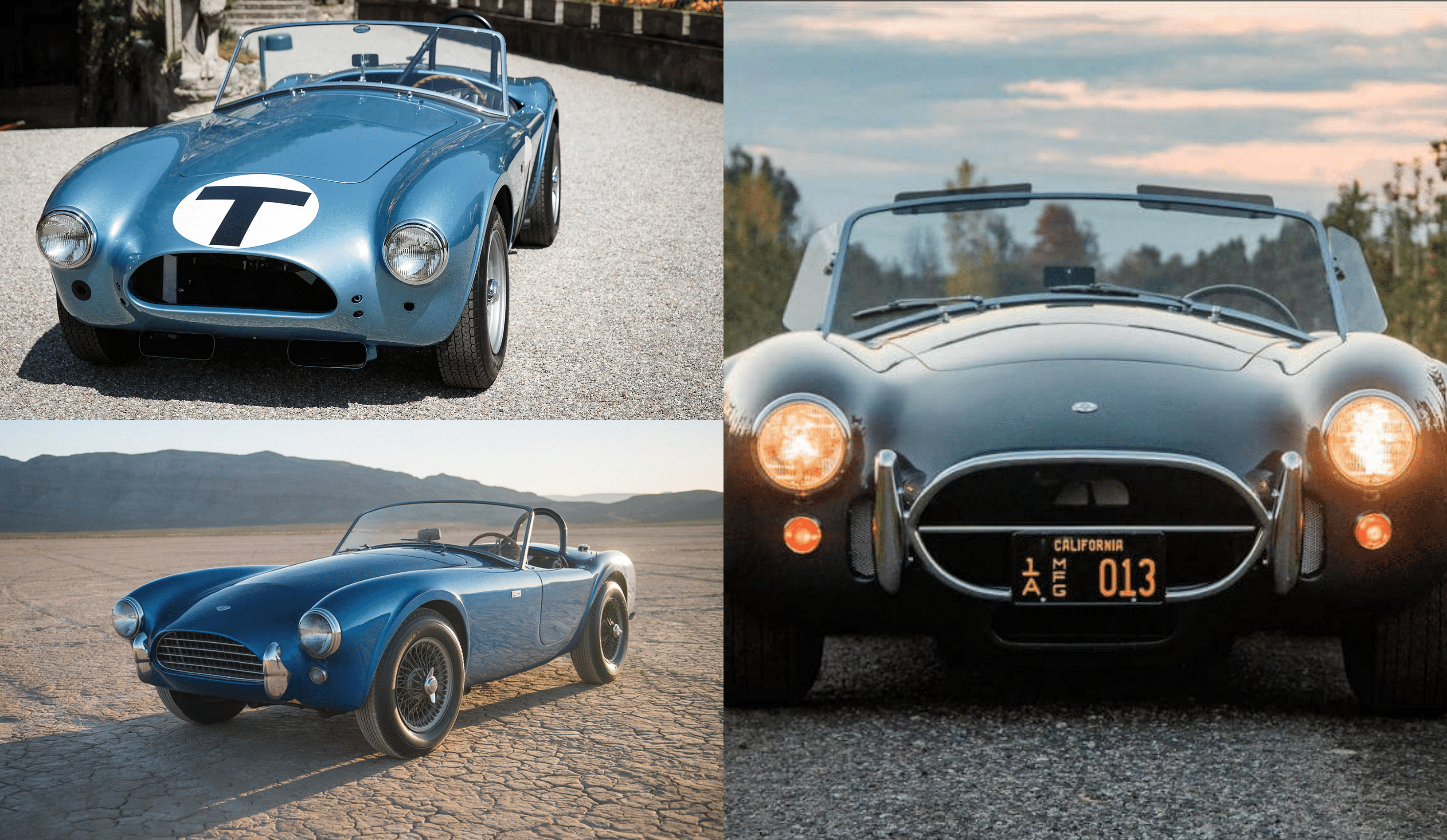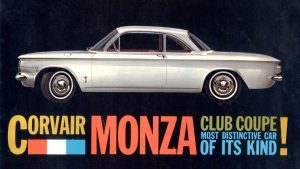
The man behind the Cobra, Carrol Shelby already had a glorious career in motorsports but had to retire due to health conditions. As such, he began pursuing his dream of making cars and approached British car maker AC. To his luck, the brand just discontinued its Ace and agreed to sell Shelby the body shells. After procuring them, Shelby’s team fitted them with the Ford V8 motor which he procured after having a deal with Ford beforehand.
After building the MK1 models, AC’s chief engineer did some significant design changes to the front end of the car, and the newly-designed car was slated for production in 1963 as the MK2 model. Since Shelby did want to experiment with the Cobra further, he fitted a big block Ford FE engine into the MK2 Cobra. However, a lack of proper development and finally Ken Mile’s driving review of the car led Shelby to use an aluminum motor which made it perform better.
The AC Cobra from 1961 to 1967
The AC Cobra was always a roofless sports car that bettered the legendary Corvette out on the tracks. Being a racer himself, Shelby focused more on the handling and performance of the car rather than its comfort and aesthetics. As a result, the Cobra remained a barebones car until the end of its production.

When it came to upgrading the Cobra, Shelby collaborated with Ford and designed the MK3 model of the Cobra. Several improvements include a much bigger Ford motor, a new chassis, and a new suspension setup. Despite all its popularity and the thrill of driving, Shelby was able to produce a limited number of Cobras since a majority of the buyers ended up crashing them.
What type of engine power the Cobra?
As the saying goes “There’s no replacement for displacement”, it’s quite the American way of doing things and Carrol Shelby made sure of it. During its launch, Shelby put the 4.3-liter Ford V8 motor on the first 75 models of the car. After that, another 51 models of the Cobra received a bigger 4.7-liter version of the V8 with better power figures.

During its final production run, the MK3 Cobra received a massive 7.0-liter Ford FE V8 engine, popularly called a “side oiler”. While the redesigned car was originally intended for racing, Shelby built a few models with a differently tuned and more affordable version of the 7.0-liter V8 for street usage.
How did it perform?
Prior to launching the Cobra, Shelby approached General Motors for using its V8 motor for his car. However, Zora Arkus-Duntov not wanting any competition with the Corvette yet then, he declined. Then the rest is history. With Ford’s V8, Shelby went on to make the fastest American eventually. With the Ford V8 under the hood, Shelby made the Cobra way superior to the Vette, especially with disc brakes at the front along with a better rack and pinion steering column. Right from the start, the Cobra was motorsports-ready due to its barebones construction.

The MK3 Cobra was more powerful with the mammoth engine under the hood, and it delivered a beefy 425 hp along with 480 lb-ft of torque. Considering the lightweight construction of the Cobra, the power figures were massive, which led to several crashes since the power delivery was untamed. With the 7.0-liter motor, the Cobra was able to do the 0-60 mph sprint in under 4 seconds and reach a top speed of 185 mph. Among the 1,000 Cobras ever made, less than 900 units are known to be surviving today and a well-maintained Cobra 427 can fetch more than a million dollars in an auction.





